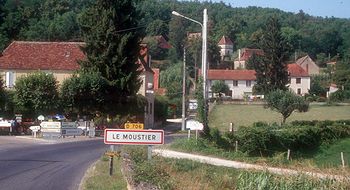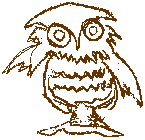 |
| Most names of archaeological assemblages derive from the places where they were first identified, usually wee villages where human settlement has not yet destroyed the sites. Le Moustier (luh-moost-YAY), shown here almost in its entirity, gave its name to the Mousterian. |
The name "Mousterian" (moose-TEAR-ree-un) derives from the name of the southern French village of Le Moustier, although the tradition is identified across Europe and southwestern Asia. The Mousterian toolkit, which followed the Acheulean toolkit, is closely associated in Europe with the remains of Homo neanderthalensis, although Mousterian tools have also been found in Homo sapiens sites of the same period, and late Neanderthals have occasionally been found with post-Mousterian tools.
The Mousterian represents an advance over the Acheulean tradition in that Mousterian tools are typically flakes, produced from cores that are meticulously pre-processed with the clear intent of shaping them to produce optimal flakes. This permitted a smaller amount of stone to produce a far longer total cutting edge, and the flake tools so created gradually displaced the older and less efficient hand axes for most purposes. This kind of core preparation is referred to as the "Levallois" (lev-all-WA) technique.
Photo by DKJ
